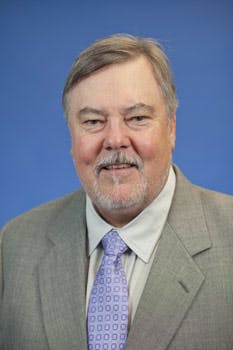Bad LED lighting shows in surprising places (MAGAZINE)
I'm just back from the co-located Strategies in Light & The LED Show events in Las Vegas. As is the case with most major events, I returned with a lot of information to mull over and we will have lengthy features on the conferences next month. But my first thoughts about the week are cautionary. Speakers at the conference made it clear that the lighting community still has work to do to properly leverage LED sources. And Las Vegas afforded the opportunity to see some really bad LED lighting.
Las Vegas has been the site of some of the most impressive LED projects - the Chandelier lounge located at the Cosmopolitan comes to mind, with it having won a Cooper Source Award back in 2012. But many of the resorts and casinos have refused to use LEDs in hospitality settings, demanding true incandescent warmth and dimming.
The supposed discerning eye of the lighting designers working in luxury properties made my walk through the Forum Shops at Caesars Palace a surprise, because I found some truly horrible LED installations. Understand that the Forum Shops complex houses a high-end collection of retailers and restaurants. There is not a tenant in the complex that you would expect to skimp on lighting.
Related article: Land of context confusion
But... There is a jewelry store among the shops that has installed LED strip lights along the sides of display cases in the upper corners. The LEDs are clearly meant to make the merchandise sparkle. Unfortunately, the LEDs are installed at an angle that exposes the point sources directly to the eyes of customers entering the store. The glare is incredible. Proper design could have hidden the sources completely.
A high-end clothing retailer also stood out in a bad way. In the window, the retailer had installed some downlights to highlight items on display. The downlights were mounted perhaps a foot higher than my eye level. Each seemed to be based on three LEDs that were unfortunately visible and one of the LEDs in each of the downlights seemed to radiate directly toward the window shopper, creating annoying glare. Either the product selection or lighting concept, or both, are horribly wrong.
Still, the money machine that is Las Vegas will yield more incredible examples of what can be accomplished with solid-state lighting. The Canal Shops complex at the Venetian resort already has a lighting system that mimics outdoor light levels during the day and night. A server in a restaurant in the replica St. Mark's Square area told me that new LED-based lighting being planned would include a match in chromaticity as well as intensity to natural light at different parts of the day and night. I hope to learn more about the project that is in part being driven by concerns for the workers that are indoors and isolated from daylight.
Back to the conference, there was plenty of talk about lighting and circadian rhythms. One talk from lighting designers Deborah Burnett and James Benya on evidence-based design warned that we still don't know enough about the impact of blue-based point sources on humans, and that there aren't sufficient guidelines to ensure optimal use of LED lighting. I promise you more on the topic next issue.
Maury Wright,
EDITOR
[email protected]

Maury Wright | Editor in Chief
Maury Wright is an electronics engineer turned technology journalist, who has focused specifically on the LED & Lighting industry for the past decade. Wright first wrote for LEDs Magazine as a contractor in 2010, and took over as Editor-in-Chief in 2012. He has broad experience in technology areas ranging from microprocessors to digital media to wireless networks that he gained over 30 years in the trade press. Wright has experience running global editorial operations, such as during his tenure as worldwide editorial director of EDN Magazine, and has been instrumental in launching publication websites going back to the earliest days of the Internet. Wright has won numerous industry awards, including multiple ASBPE national awards for B2B journalism excellence, and has received finalist recognition for LEDs Magazine in the FOLIO Eddie Awards. He received a BS in electrical engineering from Auburn University.





